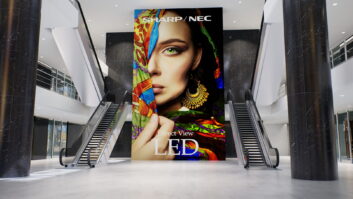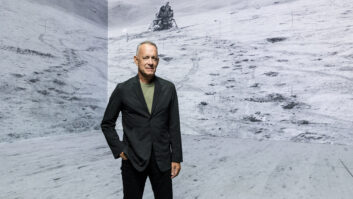
The O2, the world’s highest-grossing music venue, has upgraded its audio system, which also has PA-VA functionality. Paddy Baker got a chance to listen to the system, based around Bose ShowMatch line arrays.
Eddie Thomas jocularly calls The O2 “my home since 1998” – having been involved in audio at the east London venue since its original incarnation as the Millennium Dome. At the end of June, Thomas, technical specialist at SSE Audio Group, presented The O2’s new PA system at a press and customer event. It’s an upgrade to the system that he installed in 2006, ahead of the opening of The O2.
The replacement decision came about following a 10-year equipment lifecycle exercise carried out with venue operator AEG. This looked to replace key items and provide a system that will last for another 10 years. SSE and AEG looked at current and upcoming technology in the areas of networks, amplification, speakers and operational suitability – particularly the ability to provide bespoke GUIs for security, event control, engineering control and fault reporting. “Primarily this is a life safety system – public address and voice alarm – it just happens to do production as well,” commented Thomas.
He also wanted to integrate everything onto a single platform. It was decided to base the system on a QSC Q-SYS network on a Dante network, with Crown amplifiers (DCi4|1250DA and DCi8|600DA models for low- and high-frequency elements respectively) and Bose Professional line arrays. RoomMatch was the original choice, but on hearing a demo of the company’s ShowMatch speakers (also part of the DeltaQ array range), Thomas felt they were a better fit for the venue, and held off on the project until they became available. Bose and SSE worked together to use Bose Modeler software to design the system for The O2.
There are two Q-SYS Core 3100i processors, each with its own fibre network and dedicated equipment racks in separate locations. Every rack has A and B network switches. “So in the event of an incident in one part of the building, it doesn’t compromise the operation of the PA-VA system,” commented Thomas. “We could lose quite a bit of the network without it affecting performance of the voice alarm system.” Q-SYS I/O frames provide the contact and fire alarm interface I/O.
SSE worked with Crown parent Harman to develop a software plugin that extracts key HiQnet data from the amplifiers and passes it to the Q-SYS platform. This includes essential data for a PA-VA system, such as fault reporting, signal path monitoring and amplifier condition.
Circular cluster
Because the venue hosts both conventionally staged and in-the-round events, the heart of the Bose install is a circular truss mounted with eight clusters of eight ShowMatch speakers, high above the centre of the venue. Bose Auditioner software was used to produce an auralisation of the system at multiple positions in the arena.
This circular cluster is designed to cover all of the tiered seating, although the upper levels are enhanced with four clusters of eight ShowMatch cabinets each. (It does not cover the floor level – generally, this function is carried out by visiting productions’ own touring rigs.)
Additionally, the low end is boosted by a total of 24 RMS218 (2 x 18in) subwoofer cabinets in six vertical roof-mounted hangs. Unlike the circular cluster, these are powered by Bose PM8500 amplifiers, with DSP deployed to control low-frequency steering.
To give us a feeling of the tonality of the Bose ShowMatch range at floor levels, a single hang of 10 ShowMatch cabinets, topped with two SMS118 (1 x 18in) subwoofers, was set up specifically for this event to mimic a stage system.
Moving around
Listening to these different system elements took some moving around the 20,000-capacity venue. We started at floor level, listening to the brought-in hang. We then moved up to Level 4 to listen to the delay speakers, and then most of the way back down again to the first few rows of seating.
Overall, the experience was good. The temporary stage hang gave a powerful but detailed rendition of AC-DC’s Back in Black, with fairly even coverage as one moved from the front to the back of the space. Up at Level 4, we listened to a piano-led song with a female vocal, and Back in Black again – with more bass evident than when we were listening to the stage hang only. The sound from the delay speakers was cut out temporarily so we could tell exactly how synchronised their sound was with the main stage system – and they were spot on, despite the sound leaving the latter speakers 105ms (we were told) before the delays.
The least good sound experience was listening to the circular cluster itself, in the lower rows of seating. While the tonality was just as good as before, there was more booming in the bass, something that was particularly noticeable in some slower tracks where less was happening. However, this is to be expected in a venue of this size, and likely to be significantly reduced when thousands of people are occupying the seating. Reverberation issues aside, the sound quality was good, with clear and crisp reproduction across a variety of musical styles and singing voices.
As befits the highest-grossing venue in the world, The O2 can be confident that its audiences can enjoy premium-level sound for the next decade.







